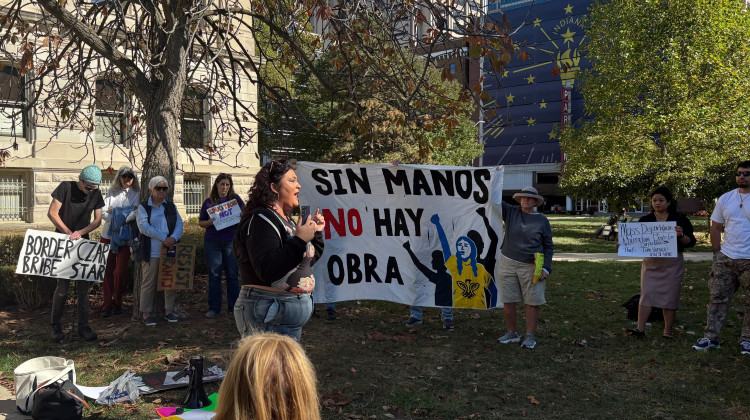Research at Indiana University Purdue University Indianapolis may produce new ways to fight infection and improve forensic science by mapping a common fly.
There’s a room full of flies on the third floor of the IUPUI science building.
IUPUI assistant professor of biology Christine Picard says one of the species in the containers is the black blow fly, a common fly in Indiana.
Picard has been studying the insect for 10 years and her team recently finished mapping its genome. She says the fly has properties that could inform treatment possibilities – like larva therapy.
“They will go in and they will mechanically eat all of the food or dead tissue that’s present, they do better than a surgeon, while excreting some anti-microbial compounds,” Picard says.
The black blow fly can also be used in forensics to determine time of death and mapping the genes gives scientists a better understanding of how different building blocks work.
“Something as simple as being able to detect the smell of death or being a maggot that develops really fast or really slowly is all prescribed in the DNA itself,” says Picard.
Much of the research was done by student Anne Andere, who says her image of the insect is changed.
“I see flies nowadays I take a picture and I share it with my sister and my family and everyone is grossed out, but I’m like ‘those things are powerful’ you know?” says Andere.
The black blow fly is the 239th insect to have its genes sequenced.
 DONATE
DONATE









 Support WFYI. We can't do it without you.
Support WFYI. We can't do it without you.